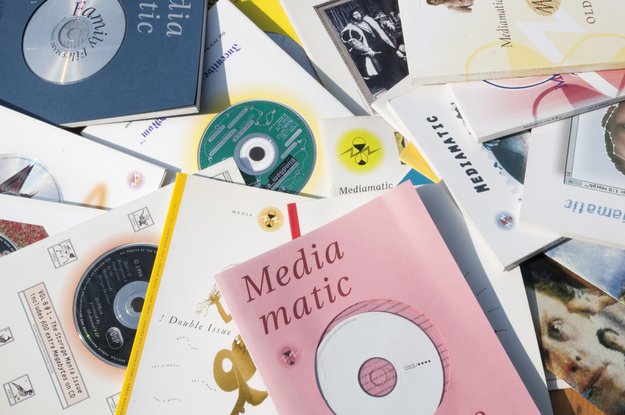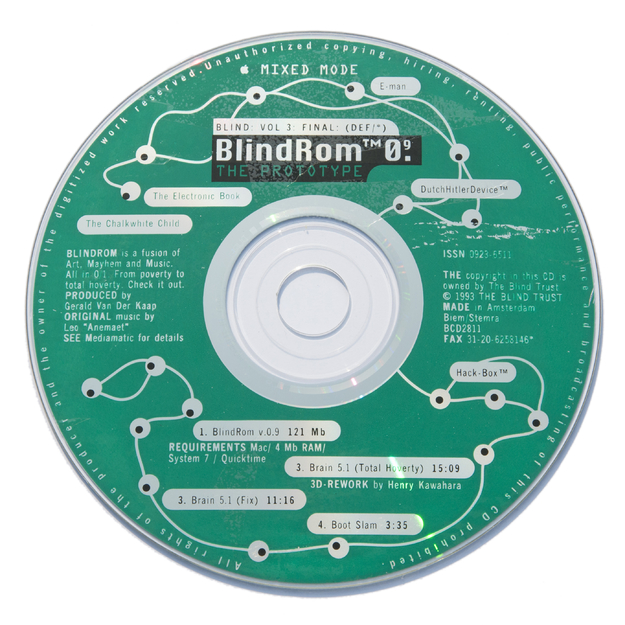What is CD-Rom art
To understand CD-ROM art and the immediacy of its preservation, one needs to take a step back to the previous century, when the Internet was at its birth and when personalized computers just began to appear. Yes, there was a time that having your own computer was not a thing!
In the late 80s CD-ROMs (Compact Disc Read-Only Memory) were introduced to the public as a new medium to store and distribute information; much more than the Internet could do at that time. Large amounts and diverse types of information (text, audio, image, video, graphics) could be compacted in a low-cost and portable device. These new possibilities of the CD-ROM attracted the attention of the artistic world, and soon many artists began experimenting with its boundaries and creating works especially designed for the medium.
The main reason behind this fascination with the CD-ROMs that transformed them into a new artistic medium was interactivity. For the first time, artists were presented with a tool which allowed a democratic relationship between the user and the artwork, where the former is not just observing but actively interacting with the latter. Immersive multimedia spaces and game-like environments were available to the public in front of their personal computer, free for them to explore in their own way.
However, rapid technological developments, the advancing storage capacity of computers and easy data distribution over the Internet soon left CD-ROMs behind, and their use declined in the 21st century. What seemed like the ground-breaking discovery quickly fell into oblivion.
But isn’t that the purpose of technology? To meet the fast-changing needs of society? To develop? Why should I care?
Yes, of course! But when a new door opens one always closes behind. And that is the cost of technological innovation when it comes to CD-ROMs. That is what makes them so vulnerable and at the same time unique: they are bound to devices and systems that are not in use anymore. Most computers now are not even equipped with a CD drive and the operating systems supporting the CD-ROMs are outdated. And this can only mean one thing: in a few years our access to these artworks might be lost forever. Can you imagine waking up and realizing that your favorite photos, music, letters in your old computer are gone just because your new and fancy one cannot read them? Would you keep your memories trapped in your old device? There're there! There must be a way to get them back; to keep them alive. The same goes with CD-Rom art. Keeping its memory alive is what we can do so no one will have to forget.
Mediamatic and CD-Rom Art
Mediamatic has a long history with new media and digital art. Since its foundation in 1983 and especially after 1985 through the Mediamatic Magazine and Mediamatic Off-line, Mediamatic aspired to create an interdisciplinary ‘contact zone’ for art, technology and science; a meeting point where artists and professionals for various fields could contemplate, discuss and mediate issues around the new media. Within this context, from 1994 until 2007 Mediamatic Publishing played a key role in the promotion and distribution of significant CD-ROM/DVD-ROM artworks. Creations by prominent artists such as Gerald van Der Kaap, Florian Thalhofer, Mari Soppela and Jodi exploring the artistic possibilities of CD and DVD-ROMs were published and circulated on an international scale!
This is the challenge Mediamatic tries to explore with the presentation of its collection of CD-ROMs. To keep their memory alive and re-introduce them to its audience in a new way. Now, after almost 30 years after the publication of the first CD-Rom of its collection, Mediamatic aspires to give voice to and new meanings these, now almost forgotten artworks. Starting with BlindRom, The Prototype be Gerald van der Kaap (1993), originally published by the Blind Trust and later featured in the End of Advertising issue (winter 1994) of the Mediamatic Magazine, Mediamatic takes a dive into its collection and explores what CD-Roms have to tell us today.

